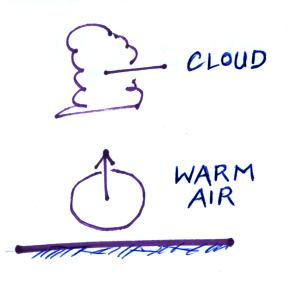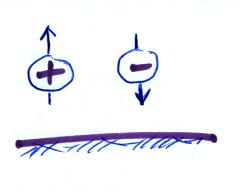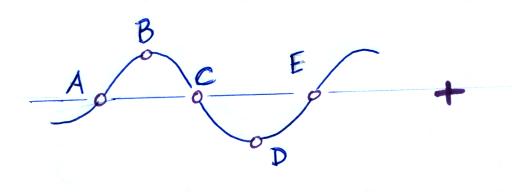1.
When 200 calories of energy are added to 40 grams of a material, its
temperature increases 15o C. You could use
this information to determine the object's
a. density b. kinetic energy c. latent heat d. specific heat e. thermal conductivity
2. One _____________________ is the energy needed to warm 1 gram of water 1o C.
3. Sunlight energy added to water could be used to ____________________ the water or to ___________________
the water.
4. Match each of the material below at left with an appropriate energy transport process from the list at right.
air_______ water_______ a. conduction
b. convection
copper_______ c. latent heat
5. The energy associated with the random, haphazard, motions of atoms or molecules in a substance is
a. specific heat b. kinetic energy c. latent heat d. temperature
6. An air temperature of 70o F feels comfortable. 70o F water feels cold because water has _______ than air.
a. higher specific heat b. lower specific heat c. higher thermal conductivity d. lower thermal conductivity
7. 0o is the freezing point of water on the _______ scale.. 300o is the mean global temperature of the earth on
the _______ scale. 212o is the boiling point of water on the _______ scale.
a. Calorie b. Celsius c. Fahrenheit d. Kelvin
8. Which two of the following occur during cloud formation?
a. condensation b. deposition c. evaporation d. sublimation
9. Which of the following forms of energy is released when clouds form?
a. specific heat b. potential energy c. latent heat d. kinetic energy
10. Water vapor will often condense onto a cold can of beverage when it is removed from the refrigerator. Will this
act to WARM or COOL the drink inside the can?
11. The warm rising air and the formation of the cloud in the figure below illustrate which two energy transport
processes?

12. An electrical charge that is slowly moving up and down will produce LONG SHORT wavelength,
LOW HIGH frequency, and LOW HIGH energy electromagnetic radiation.
13. Do the motions of the electrical charges in the figure below mean the electric field arrow is pointing UPWARD
pointing DOWNWARD, or that the electric field is ZERO?

14. Energy must be added to a
substance to cause which of the following phase changes? (more than one
answer)
a. sublimation b. melting c. evaporation d. condensation
15. Points A and C on the wave of electromagnetic radiation below are 0.5 1 1.5 2 wavelength(s) apart.
When Point D arrives at the position of the + charge, will the charge move UP DOWN RIGHT or LEFT?

this information to determine the object's
a. density b. kinetic energy c. latent heat d. specific heat e. thermal conductivity
2. One _____________________ is the energy needed to warm 1 gram of water 1o C.
3. Sunlight energy added to water could be used to ____________________ the water or to ___________________
the water.
4. Match each of the material below at left with an appropriate energy transport process from the list at right.
air_______ water_______ a. conduction
b. convection
copper_______ c. latent heat
5. The energy associated with the random, haphazard, motions of atoms or molecules in a substance is
a. specific heat b. kinetic energy c. latent heat d. temperature
6. An air temperature of 70o F feels comfortable. 70o F water feels cold because water has _______ than air.
a. higher specific heat b. lower specific heat c. higher thermal conductivity d. lower thermal conductivity
7. 0o is the freezing point of water on the _______ scale.. 300o is the mean global temperature of the earth on
the _______ scale. 212o is the boiling point of water on the _______ scale.
a. Calorie b. Celsius c. Fahrenheit d. Kelvin
8. Which two of the following occur during cloud formation?
a. condensation b. deposition c. evaporation d. sublimation
9. Which of the following forms of energy is released when clouds form?
a. specific heat b. potential energy c. latent heat d. kinetic energy
10. Water vapor will often condense onto a cold can of beverage when it is removed from the refrigerator. Will this
act to WARM or COOL the drink inside the can?
11. The warm rising air and the formation of the cloud in the figure below illustrate which two energy transport
processes?

12. An electrical charge that is slowly moving up and down will produce LONG SHORT wavelength,
LOW HIGH frequency, and LOW HIGH energy electromagnetic radiation.
13. Do the motions of the electrical charges in the figure below mean the electric field arrow is pointing UPWARD
pointing DOWNWARD, or that the electric field is ZERO?

a. sublimation b. melting c. evaporation d. condensation
15. Points A and C on the wave of electromagnetic radiation below are 0.5 1 1.5 2 wavelength(s) apart.
When Point D arrives at the position of the + charge, will the charge move UP DOWN RIGHT or LEFT?
